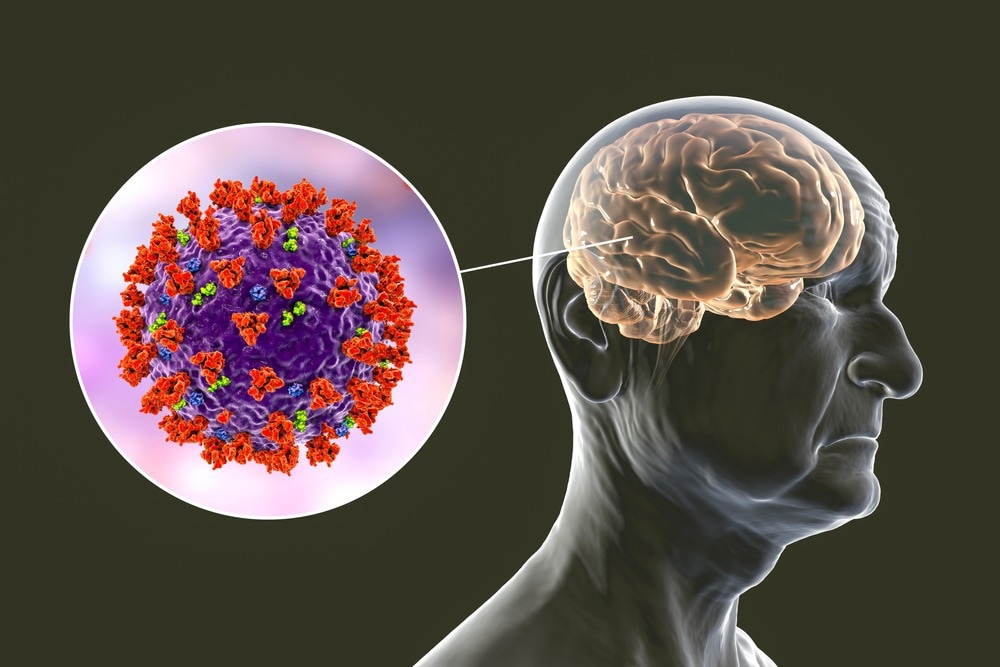 By Neha MathurReviewed by Danielle Ellis, B.Sc.Sep 27 2022
By Neha MathurReviewed by Danielle Ellis, B.Sc.Sep 27 2022In a recent study posted to the medRxiv* server, researchers investigated cognitive deficits associated with acute severe acute respiratory syndrome coronavirus 2 (SARS-CoV-2) infection.
 Study: Effects of SARS-CoV-2 Infection on Attention, Memory, and Sensorimotor Performance. Image Credit: Kateryna Kon/Shutterstock
Study: Effects of SARS-CoV-2 Infection on Attention, Memory, and Sensorimotor Performance. Image Credit: Kateryna Kon/Shutterstock

 *Important notice: medRxiv publishes preliminary scientific reports that are not peer-reviewed and, therefore, should not be regarded as conclusive, guide clinical practice/health-related behavior, or treated as established information.
*Important notice: medRxiv publishes preliminary scientific reports that are not peer-reviewed and, therefore, should not be regarded as conclusive, guide clinical practice/health-related behavior, or treated as established information.
Background
Previous studies have documented cognitive deficiencies after acute coronavirus disease 2019 (COVID-19). However, the majority of such studies barely used quantitative measures. Among those who did use quantitative measures in their assessment, many did not use a control cohort and limited their evaluations to hospitalized patients. Furthermore, the neuropsychological assessments made in these studies were not in-depth or comprehensive, and some used the Telephone Assessment of Cognitive Status (TICS) without supervision.
About the study
In the present study, researchers recruited 45 participants aged 18 to 70 from a clinic at the University of Maryland, United States (US). Of these, 11 participants had Long-COVID, 14 had acute COVID-19, and 20 had no history of COVID-19; they made the three study cohorts.
Those 11 participants with Long-COVID had persistent symptoms after 16 weeks of initial infection. A clinician with expertise in investigating Long-COVID interviewed these participants and ensured the status of the initial SARS-CoV-2 infection. Further, they ensured that none of the participants had any substance use disorder or were regular alcohol, marijuana, and nicotine users in the past 90 days. They used urine drug screens to screen these substances on the day of testing. In addition, they excluded participants with pregnancy, neurological disorders, incarcerated prisoners, and cardiac or pulmonary diseases.
The team performed a rapid antigen test (RAT) for all the study participants to ensure they did not have acute COVID-19 infection on the day of participation. The researchers mandated that all the study participants completed an eight-item online questionnaire with questions regarding their COVID-19 status (e.g., vaccination date status, treatments).
More importantly, the team performed behavioral assessments in person via the National Institute of Health (NIH) toolbox. In addition, they made these participants undergo a formal psychometric test called the d2 Test of Attention, which measured their concentration while reacting to visual stimuli in a timed manner. This test encompassed 14 sequential trials of 20 seconds each. They computed the total number of items processed (TN), the percentage of errors (E%), and the number of correct items (TNE) for each participant. These values helped the researchers compute each participant's concentration performance (CP).
For multiple regression analysis, the team used each demographics, such as age, gender, and education, as fixed effects. The study outcomes comprised the Neuro-Quality of Life questions (Neuro-QoL) reports and cognitive and sensorimotor measures. Finally, the researchers used Hotelling's two-sample T2-multivariate test to examine the differences in the Neuro-QoL response profiles of all participants.
Study findings
The participants in all three study cohorts had comparable age, sex, and education and none failed the drug screen examination.
The researchers noted that participants with Long-COVID, i.e., those with persistent cognitive symptoms after the acute phase of illness, also had more anxiety, fatigue, sleep disorders, apathy, and emotional dysregulation than individuals who did not experience COVID-19. In addition, these participants had poor cognitive functions. Similarly, Hotelling's two sample T2-test evidenced these differences, with a T.2 value of 6.48. Except for depression, all other Long-COVID and No-COVID comparisons based on the NIH Toolbox Neuro-QoL scores were statistically significant.
The degree of impairment across different neuropsychological domains also varied among the participants of the three study groups. The d2 Test of Attention results provides evidence of impairments in sustained attention, selective attention, and processing speed in the COVID-19 group. Likewise, the Eriksen Flanker Task also evidenced attentional dysfunction related to SARS-CoV-2 infection. The Nine-Hole Pegboard Test, a measure of visuomotor function, also showed that COVID-19 patients had aberrant motor skills, enhanced further likely due to attention deficits. Lastly, the Mini-Mental Status Exam showed no cognitive impairment in moderately ill COVID-19 patients compared to controls.
Similar to a study by Zhao et al., the current study results pointed at deficits in selective attention, sustained attention, and visuomotor coordination in the study population. It was likely due to the infection severity of the study participants, given that a staggering 30.8% of them required hospitalization.
Yet, the researchers could not confirm an objective biomarker to predict the variations in cognitive and sensorimotor effects following SARS-CoV-2 infection. Thus, SARS-CoV-2 infection may affect the brain in only a subgroup of infected individuals. Another intriguing finding was that some COVID-19 participants with no self-reported cognitive issues performed poorly in psychometric testing, indicating that SARS-CoV-2 infection could have subclinical effects.
Conclusions
The current study showed deficits in attention, processing speed, visuomotor coordination, and declarative memory >14 weeks after SARS-CoV-2 infection. The degree of impairment varied across different neuropsychological domains, although it is possible that self-reported estimates of Neuro-QoL changes were global.
As poor concentration and mental fatigue emerged as major complaints in Long-COVID patients, future studies should investigate their underlying neuropathophysiological mechanisms. In addition, studies should determine whether structural and functional brain changes cause these behavioral and performance deficits following acute COVID-19.

 *Important notice: medRxiv publishes preliminary scientific reports that are not peer-reviewed and, therefore, should not be regarded as conclusive, guide clinical practice/health-related behavior, or treated as established information.
*Important notice: medRxiv publishes preliminary scientific reports that are not peer-reviewed and, therefore, should not be regarded as conclusive, guide clinical practice/health-related behavior, or treated as established information.